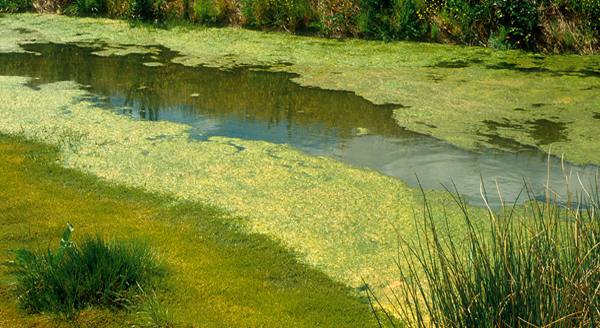TOPEKA – The Kansas Department of Health and Environment (KDHE), in conjunction with the Kansas Department of Wildlife, Parks and Tourism (KDWPT), has issued public health warnings for some Kansas lakes for the upcoming weekend and week.
If a lake is under a public health warning for blue-green algae, activities such as boating and fishing may be safe. However, direct contact with water (i.e., wading, skiing and swimming) is strongly discouraged for people, pets and livestock. The lakes currently under a public health advisory:
- Warning: Atchison Co. Park Lake, Atchison Co.
- Warning: Hodgeman County SFL, Hodgeman County
- Warning: Perry Lake, Zone B (the Slough Creek arm), Jefferson County
- Warning: Marais Des Cygnes Wildlife Area Lake, Linn County
- Warning: Carbondale West Lake, Osage County
- Warning: Melvern Outlet Pond, Osage County
- Warning: Melvern Outlet Swim Pond, Osage County
- Warning: Webster Lake, Rooks County
- Warning: Frazier lake, Grant Co.
- Warning: Rooks Co. SFL, Rook Co.
- Warning: South Park Lake, Johnson Co.
- Warning: Lake Wabaunsee, Wabaunsee County
- Warning: Lake Afton, Sedgwick County
- Watch: Overbrook City Lake, Osage County
- Watch: Rock Garden Pond, Gage Park, Shawnee County
Watch: Central Park Lake, Shawnee Co.
Watch: Mary’s Lake, Douglas Co.
Lakes under a warning are not closed. Marinas, lakeside businesses and park camping facilities are open for business. If swim beaches are closed, it will be specifically noted. Drinking water and showers at parks are safe and not affected by algae blooms. Boating and fishing are safe on lakes under a warning, but contact with the water should be avoided. Hands should also be washed with clean water after handling fish taken from an affected lake. Zoned lakes may have portions fully open for all recreation even if other portions are under a warning.
Kansans should be aware that blooms are unpredictable. They can develop rapidly and may float around the lake, requiring visitors to exercise their best judgment. If there is scum, a paint-like surface or the water is bright green, avoid contact and keep pets away. These are indications that a harmful bloom may be present. Pet owners should be aware that animals that swim in or drink water affected by a harmful algal bloom or eat dried algae along the shore may become seriously ill or die.
When a warning is issued, KDHE recommends the following precautions be taken:
- Lake water is not safe to drink for pets or livestock.
- Lake water, regardless of blue-green algae status, should never be consumed by humans.
- Water contact should be avoided.
- Fish may be eaten if they are rinsed with clean water and only the fillet portion is consumed, while all other parts are discarded.
- Do not allow pets to eat dried algae.
- If lake water contacts skin, wash with clean water as soon as possible.
- Avoid areas of visible algae accumulation.
KDHE samples publicly-accessible bodies of water for blue-green algae when the agency receives reports of potential algae blooms in Kansas lakes. Based on sampling results, KDHE reports on potentially harmful conditions.
For information on blue-green algae and reporting potential harmful algal blooms, please visit www.kdheks.gov/algae-illness/index.htm.
Half of Kansas at high risk for West Nile Virus
 Metro Voice News Celebrating Faith, Family & Community
Metro Voice News Celebrating Faith, Family & Community









